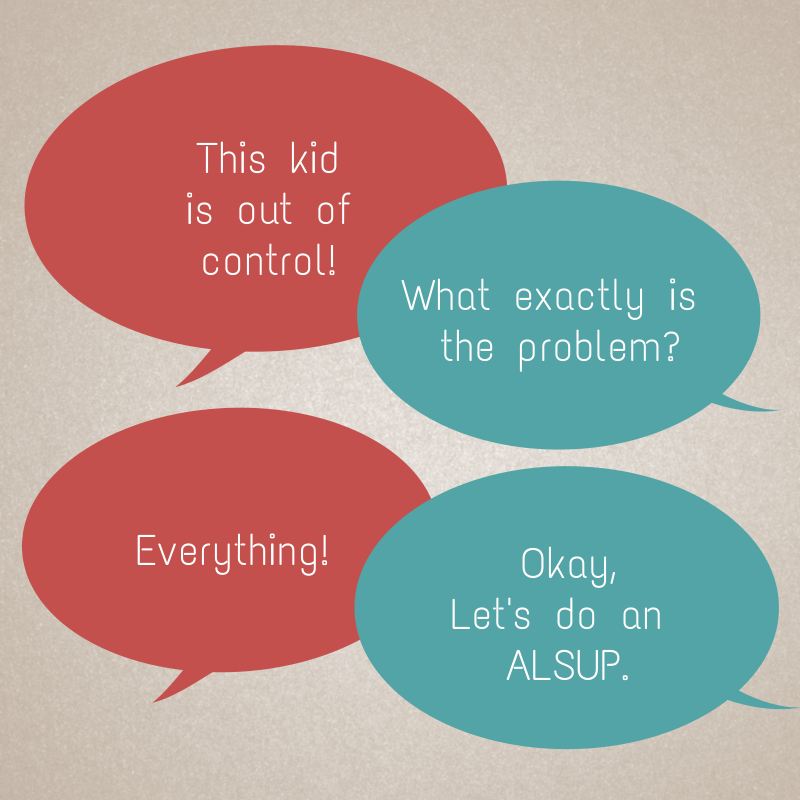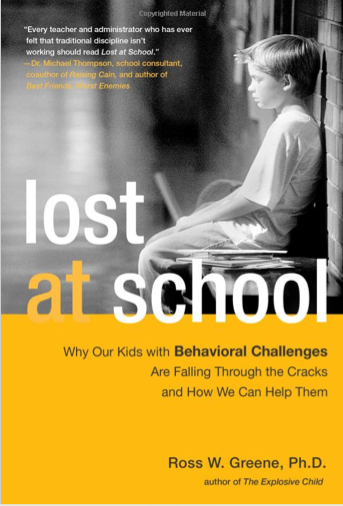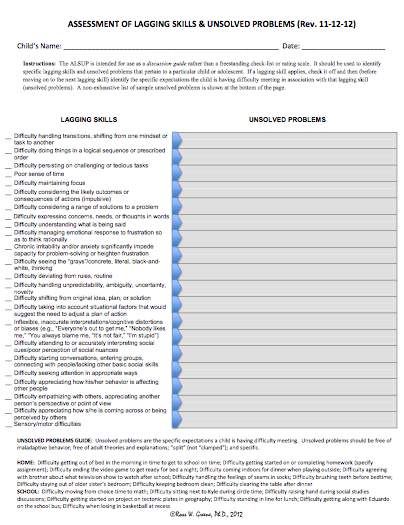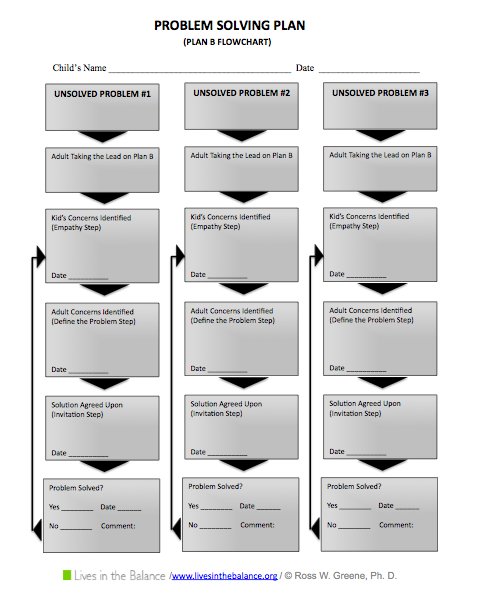 Raise your hand if you’ve ever worked with a kid whose behavior was complicated. Yeah, I thought so. Now, raise your hand if you’ve ever had staff describe behaviors using terms like “disrespectful,” “rude,” “unfocused,” or any other vague descriptors and then wanted you to be able to fix everything quickly. Raise your hand one more time if you’ve ever felt overwhelmed and didn’t know where to begin! Join the club! We’ve all been there. I wish I had a nickel for every time I’ve had a conversation like this:
Raise your hand if you’ve ever worked with a kid whose behavior was complicated. Yeah, I thought so. Now, raise your hand if you’ve ever had staff describe behaviors using terms like “disrespectful,” “rude,” “unfocused,” or any other vague descriptors and then wanted you to be able to fix everything quickly. Raise your hand one more time if you’ve ever felt overwhelmed and didn’t know where to begin! Join the club! We’ve all been there. I wish I had a nickel for every time I’ve had a conversation like this:
Behavior IS complicated, and figuring out how to help kids change it is challenging. One of the best ways to begin sorting it all out is to think about which skills are necessary in order to perform a given expected behavior and which skills a student has not yet mastered. Ross Greene, child psychologist and author of the wonderfully helpful books Lost at School and The Explosive Child, offers a research-based approach to understanding and addressing challenging behaviors that is founded on the idea that “Kids do well if they can.” This approach is based on two basic tenets: (1) challenging behavior is a result of lagging skills in the areas of flexibility, frustration tolerance, and problem-solving; and (2) the best way to address challenging behavior is to work collaboratively with the student to solve the problems that result in the behavior.
 Now, while I highly recommend that you read Greene’s books and/or go see him speak, I know that the reality is that you probably just don’t have time right now and need a quick, down-and-dirty way to help figure out how to address challenging behaviors
Now, while I highly recommend that you read Greene’s books and/or go see him speak, I know that the reality is that you probably just don’t have time right now and need a quick, down-and-dirty way to help figure out how to address challenging behaviors yesterday today. Well, guess what! Ross Greene, and his non-profit organization Lives in the Balance have just what you need – FOR FREE!
The Lives in the Balance website offers a wealth of resources for educators – an in-depth audio and video “tour” of the approach, easy-to-read summaries if you don’t have time for the full tour or just want to check things out, podcasts featuring staff from real schools talking about how they are implementing the approach, and forms that you can use to assess lagging skills and unsolved problems (ALSUP) and to develop a collaborative plan to address challenging behaviors (Problem Solving Plan). There’s even a helpful (and colorful) one-page guide to developing the Problem Solving Plan (Plan B Cheat Sheet). You can find all three of these resources – in 14 languages! – on the The Paperwork page.
 Completing an ALSUP is easy and straightforward and takes no more than 15-30 minutes. (The new 2012 version is even easier to use!) When I do one, I sit down with the classroom teacher and/or team and go through the checklist. When we check off a lagging skill, we then identify the specific unsolved problem that relates to it. For example, for the lagging skill “Difficulty shifting from original idea, plan, or solution” we might clarify the unsolved problem as “Difficulty including others’ ideas when doing partner work.” If we end up with many lagging skills checked off (this happens frequently), we prioritize or group similar skills so that we have an idea of where to begin. Problem identified!
Completing an ALSUP is easy and straightforward and takes no more than 15-30 minutes. (The new 2012 version is even easier to use!) When I do one, I sit down with the classroom teacher and/or team and go through the checklist. When we check off a lagging skill, we then identify the specific unsolved problem that relates to it. For example, for the lagging skill “Difficulty shifting from original idea, plan, or solution” we might clarify the unsolved problem as “Difficulty including others’ ideas when doing partner work.” If we end up with many lagging skills checked off (this happens frequently), we prioritize or group similar skills so that we have an idea of where to begin. Problem identified!
For me, once I’ve nailed down what the actual problem is, figuring out how to solve it is often the easier step. (Of course, going from the “how to” to the “actually solved” is a longer, often challenging process!) Depending on the situation, I may move on (with the teacher/team and student) to use the Problem Solving Plan, may develop a simple behavior plan (with the teacher/team), or I may use the information about the lagging skills to develop a group or individual intervention based on teaching the student the skills that are lagging. In some cases, completing the ALSUP might be an early step in the functional behavioral assessment process (one in which lagging skills as well as motivations are considered.) It can also help when a special education team is developing evaluation questions or when a student is brought up in the EST (Educational Support Team) process.
 So whether you’re stuck trying to figure out what to focus on in your individual or group counseling sessions, trying to help a teacher or team better understand and address student behavior, want to expand your own understanding of behavior through comprehensive (and free) professional development, or want good information to pass on to parents or school staff, I think you’ll find the ALSUP, Problem Solving Plan, and other resources at Lives in the Balance to be truly valuable.
So whether you’re stuck trying to figure out what to focus on in your individual or group counseling sessions, trying to help a teacher or team better understand and address student behavior, want to expand your own understanding of behavior through comprehensive (and free) professional development, or want good information to pass on to parents or school staff, I think you’ll find the ALSUP, Problem Solving Plan, and other resources at Lives in the Balance to be truly valuable.
Seriously, I cannot get over how amazing it is that these are so great and all so free! Here’s one way to tell that someone really, really cares about making things better for kids – he understands that the people on the front lines don’t always have the financial resources to purchase quality tools and offers them for free. Thank you, Ross Greene!!!
And now you’ll have a starting place for when you’ve got a staff member telling you that a kid is a disaster and that you just need to “fix everything.” (I once had a principal who used to say, only half jokingly, “Just do that touchy-feely crap!” when asking me to see a kid.) They’ll still think you’re a miracle worker, just one with really good tools!
You might also be interested in:
Teaching Group Skills So You Can Teach Skills in a Group



Wow! This is an awesome resource. Thank you so much for sharing
I agree with Allison, this an excellent resource.. You are the best =)
Thank you so much for this excellent resource!
This is awesome! I can’t wait to read that Ross Greene book. Thank you!!!
Such wonderful resources! Enjoyed looking through material. Will stop by again Thank you!
Thank you!